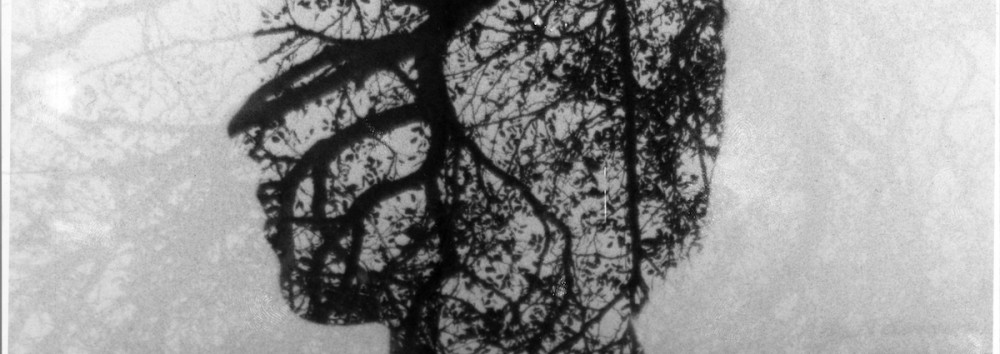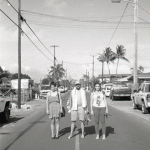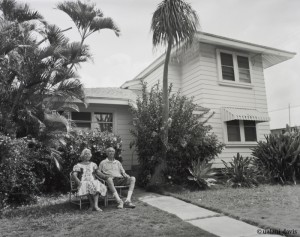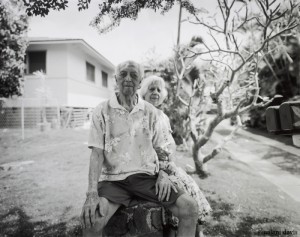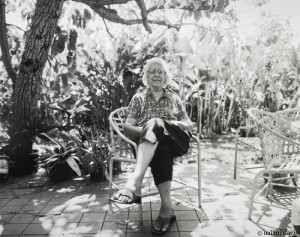Nānā i ke kumu.
Look to the source. Utilize various sources (i.e. kupuna, kumu, loea, moʻolelo, wahi pana, moʻomeheu) to foster inquiry and seek knowledge.
OVERVIEW:
Weʻve spent a quarter learning about how to use a camera, work in the darkroom to process film and print pictures, gained a better understanding of visual and conceptual focus, and how different lighting can be used to help communicate meaning. Now in the second half of our course, we are going to build upon this foundation to become more literate with our visual communication by focusing on how perspective & composition can be used to strengthen the images we create.
For this project, you will be taking family portraits while paying close attention to framing and balance in your composition. Think about how elements in your frame work to create motion, stabilizing your composition by using line, shape, space and visual weight to direct the viewer’s eye throughout an image and gather information within the picture. Also, pay attention to how your perspective of your subject matter influenceʻs the viewerʻs perspective as well.
Think about family members you love and how you could take a picture of them in a way that would communicate your love. Consider people you don’t spend a lot of time with or someone you admire, like a kupuna. Think about what it is you want to communicate about this person and how lighting, focus, and composition can play a roll in capturing that message. The whole point of this assignment isn’t just to capture their face, but to spend time with this person, learn something about them, and create meaningful images.
Since some of you may not have access to family members at all times, think about what “family” or “‘ohana” means to you. Is family only blood-relatives? What connects a family? What type of family do you belong to or want to belong to? Think about what family does for you – people who care for you, feed you, teach you, correct you? Who else represents these things to you outside of your family?
To ground this project, find an ʻōlelo noʻeau that relates to how you are approaching the idea of ʻohana. Obviously you can do a Google search, but letʻs be honest, Google isnʻt the best when it comes to ʻike Hawaiʻi. Look through the actual ʻŌlelo Hawaiʻi book by Mary Kawena Pukui for a better compilation (the HPC in Midkiff has several copies and Iʻll bring my copy to class when we come back from break).
Be aware of all the things we’ve learned so far in photography, as your prints should demonstrate an understanding of camera operations, proper darkroom technique, an awareness of lighting and composition, as well as some kind of deeper meaning/message. Build an awareness of geometry and framing in your every day world and see how shapes and partitioning of your frame can communicate ideas. Look for frames within frames to direct the gaze of the viewer and think about where to place your model. Or divide your scene up, keeping in mind the different types of balance we learned about in class too! Scroll down to watch a short video on shape/framing in composition and a review on dynamic, static, and symmetrical balance.
The week we come back from Spring Break will be a work week, so take all your pictures and be ready to process your film on the Monday we return!
STUDENTS WILL BE ABLE TO:
- Identify Elements/Principles related to composition in the world as well as other artwork
- demonstrate an understanding of photography (camera operations & darkroom techniques)
- create meaningful work that they are proud of
- spend time with people from a different generation & learn from them
- purposefully compose shots with an awareness of balance and framing
WHAT TO TURN IN:
- 1 contact sheet (24 shots = 1 full roll)
- 2 – 8″x10″ prints that illustrate interesting framing and balance
INSPIRATION:
BALANCE – How motion and visual weight work to stabilize a picture, allowing the viewer’s eye to move through the image and see info within the picture
- Motion: the effect of elements within a picture that causes the viewer’s eye to move around the frame
- Asymmetrical balance: when elements of a picture are arranged so that one side has more visual weight than the other
- Rule of Thirds: creating more movement by dividing a frame into three equal sections horizontally and vertically, and placing main subjects on the intersections of these dividing lines.
- Symmetrical balance: when there are equal weight of elements on either side of the vertical center line.
- RULE OF THIRDS
- SYMMETRICAL BALANCE
More Inspiration below!
- Check out this National Geographic Assignments page “Whatʻs in a Frame?” for interesting framing and composition. Which photograph here has the most interesting object dividing the frame?
- Amy Luna did a photography project on her grandparents to create and cherish her time with them. Notice how she doesnʻt just focus on their face, but also includes their surroundings, activities, and relationship together.
- Nicholas Nixon has taken a picture of the same 4 sisters every year for the last 40 years. The passage of time helps illustrate the changes in fashion, location, as well as relationships between sisters.
Here are some of my photographs from a body of work “Kuʻu Kupuna” revolving around my Tutu and Papa.
“Each time I visited to photograph my grandparents, I found myself struggling with my inability to control time, not only as a photographer shooting shaky-limbed models with slow film and a large camera, but as a granddaughter wanting infinite moments with her aging grandparents. From this project, I learned to resist projecting my fear of the finite onto my grandparents and instead recognize the realities of aging; choosing to see the life and happiness within my grandparents.”
NATIONAL CORE ARTS STANDARDS
PRESENTING – HS Proficient VA:Pr4.1.Ia – Anchor Standard 4: Select, analyze, and interpret artistic work for presentation.
Enduring Understanding: Artists and other presenters consider various techniques, methods, venues, and criteria when analyzing, selecting, and curating objects artifacts, and artworks for preservation and presentation.
- How are artworks cared for and by whom?
- What criteria, methods, and processes are used to select work for preservation or presentation?
- Why do people value objects, artifacts, and artworks, and select them for presentation?
